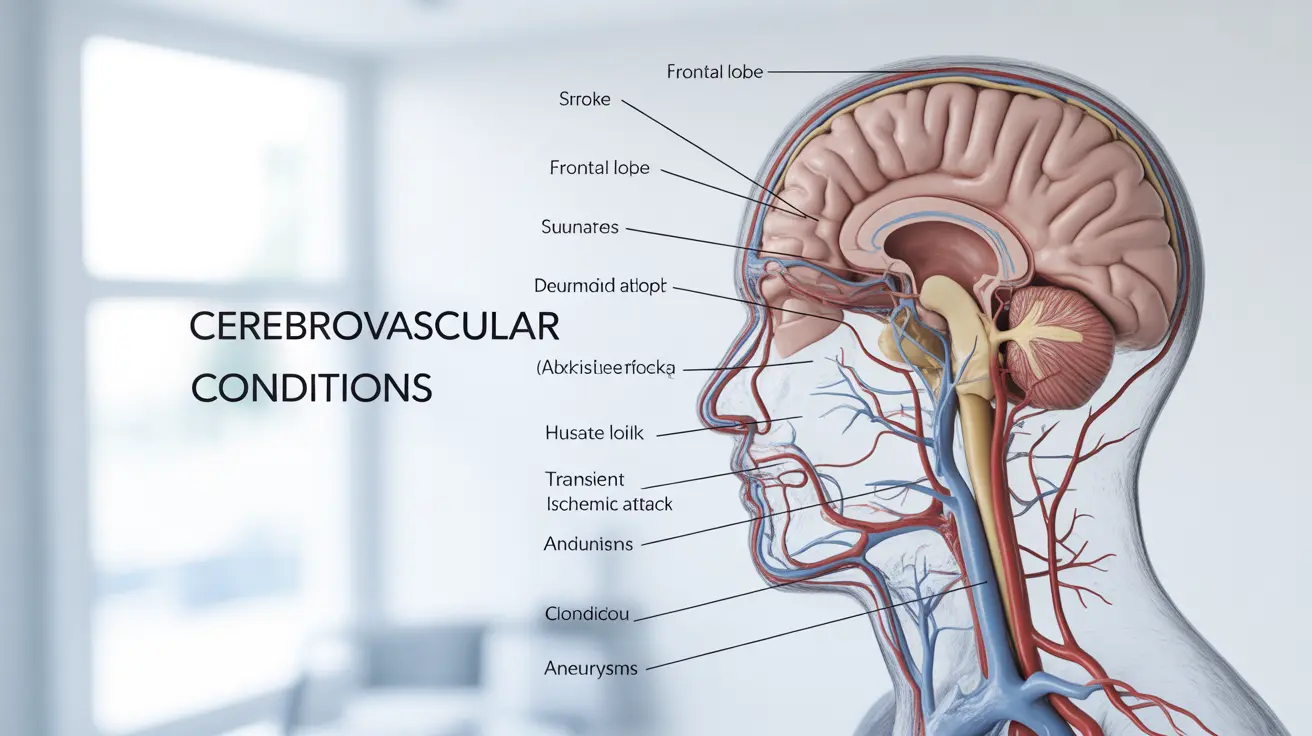Cerebrovascular disease encompasses a group of conditions that affect blood flow to the brain, potentially leading to serious health complications including stroke. These disorders can impact the blood vessels and blood supply that nourish the brain, making early recognition and proper management crucial for better outcomes.
Understanding cerebrovascular disease is essential as it represents a significant health concern affecting millions worldwide. This comprehensive guide explores the various types, warning signs, risk factors, and treatment approaches for cerebrovascular conditions.
Types of Cerebrovascular Disease
Cerebrovascular disease includes several distinct conditions that affect brain blood vessels:
- Stroke (ischemic and hemorrhagic)
- Transient ischemic attack (TIA)
- Cerebral aneurysm
- Vascular malformations
- Cerebral vasculitis
Each of these conditions can present differently and may require specific treatment approaches. Understanding the distinctions between them helps healthcare providers determine the most appropriate course of action.
Common Symptoms and Warning Signs
Recognizing the symptoms of cerebrovascular disease early can be life-saving. Common warning signs include:
- Sudden numbness or weakness, especially on one side of the body
- Difficulty speaking or understanding speech
- Sudden severe headache
- Vision problems in one or both eyes
- Loss of balance or coordination
- Confusion or altered mental state
These symptoms may appear suddenly or develop gradually over time, depending on the specific condition and its severity.
Risk Factors and Causes
Several factors can increase the risk of developing cerebrovascular disease:
Modifiable Risk Factors
- High blood pressure
- Smoking
- Diabetes
- High cholesterol
- Obesity
- Physical inactivity
- Poor diet
Non-modifiable Risk Factors
- Age (risk increases with age)
- Family history
- Gender
- Ethnicity
Diagnosis and Assessment
Healthcare providers use various methods to diagnose cerebrovascular disease:
- Physical examination
- Imaging tests (CT scans, MRI)
- Ultrasound studies
- Angiography
- Blood tests
Early diagnosis allows for more effective treatment and better outcomes for patients affected by these conditions.
Treatment Approaches
Treatment for cerebrovascular disease varies depending on the specific condition and its severity. Common approaches include:
Medical Treatments
- Blood-thinning medications
- Anti-hypertensive drugs
- Cholesterol-lowering medications
- Clot-busting drugs (for acute stroke)
Surgical Interventions
- Carotid endarterectomy
- Aneurysm clipping
- Stenting procedures
- Mechanical thrombectomy
Prevention and Lifestyle Changes
Many cases of cerebrovascular disease can be prevented through lifestyle modifications:
- Maintaining healthy blood pressure
- Regular exercise
- Healthy diet rich in fruits and vegetables
- Smoking cessation
- Limited alcohol consumption
- Regular medical check-ups
- Stress management
Frequently Asked Questions
What is cerebrovascular disease and what conditions does it include? Cerebrovascular disease refers to conditions affecting blood vessels and blood supply to the brain. It includes stroke, transient ischemic attacks, aneurysms, and various vascular malformations that can impact brain function.
What are the common symptoms and warning signs of cerebrovascular disease and stroke? Common symptoms include sudden numbness or weakness (especially on one side), difficulty speaking, severe headache, vision problems, balance issues, and confusion. These symptoms often appear suddenly and require immediate medical attention.
What causes cerebrovascular disease and what are the main risk factors? The main causes include high blood pressure, atherosclerosis, and blood clots. Risk factors include age, smoking, diabetes, high cholesterol, obesity, and family history of cardiovascular disease.
How is cerebrovascular disease diagnosed and treated? Diagnosis involves physical examination, imaging tests (CT, MRI), and blood work. Treatment may include medications, surgery, and lifestyle modifications, depending on the specific condition and its severity.
What lifestyle changes and preventive measures can reduce the risk of cerebrovascular disease? Key preventive measures include maintaining healthy blood pressure, regular exercise, a balanced diet, smoking cessation, limiting alcohol intake, and regular medical check-ups. Managing existing health conditions like diabetes and high cholesterol is also crucial.




